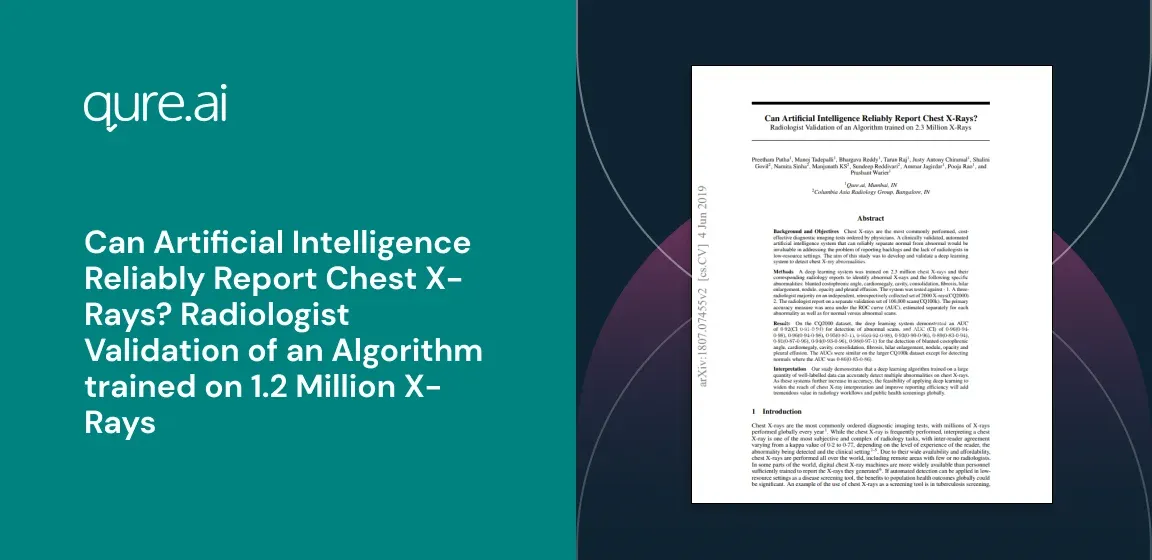Background and Objectives
Published 18 Jul 2018
Can Artificial Intelligence Reliably Report Chest X-Rays? Radiologist Validation of an Algorithm trained on 1.2 Million X-Rays
Author: Preetham Putha 1, Manoj Tadepalli 1, Bhargava Reddy 1, Tarun Raj 1, Justy Antony Chiramal 1, Shalini Govil 2, Namita Sinha 2, Manjunath KS 2, Sundeep Reddivari 2, Pooja Rao 1, Prashant Warier 11

Back
Chest x-rays are the most commonly performed, cost-effective diagnostic imaging tests ordered by physicians. A clinically validated, automated artificial intelligence system that can reliably separate normal from abnormal would be invaluable in addressing the problem of reporting backlogs and the lack of radiologists in low-resource settings. The aim of this study was to develop and validate a deep learning system to detect chest x-ray abnormalities.
Methods
A deep learning system was trained on 1.2 million x-rays and their corresponding radiology reports to identify abnormal x-rays and the following specific abnormalities: blunted costophrenic angle, calcification, cardiomegaly, cavity, consolidation, fibrosis, hilar enlargement, opacity and pleural effusion. The system was tested versus a 3-radiologist majority on an independent, retrospectively collected de-identified set of 2000 x-rays. The primary accuracy measure was area under the ROC curve (AUC), estimated separately for each abnormality as well as for normal versus abnormal reports.
Results
The deep learning system demonstrated an AUC of 0.93(CI 0.92-0.94) for detection of abnormal scans, and AUC(CI) of 0.94(0.92-0.97),0.88(0.85-0.91), 0.97(0.95-0.99), 0.92(0.82-1), 0.94(0.91-0.97), 0.92(0.88-0.95), 0.89(0.84-0.94), 0.93(0.92-0.95), 0.98(0.97-1), 0.93(0.0.87-0.99) for the detection of blunted CP angle, calcification, cardiomegaly, cavity, consolidation, fibrosis,hilar enlargement, opacity and pleural effusion respectively.
Conclusions
Our study shows that a deep learning algorithm trained on a large quantity of labelled data can accurately detect abnormalities on chest x-rays. As these systems further increase in accuracy, the feasibility of using artificial intelligence to extend the reach of chest x-ray interpretation and improve reporting efficiency will increase in tandem.
Authors
Preetham Putha 1, Manoj Tadepalli 1, Bhargava Reddy 1, Tarun Raj 1, Justy Antony Chiramal 1, Shalini Govil 2, Namita Sinha 2, Manjunath KS 2, Sundeep Reddivari 2, Pooja Rao 1, Prashant Warier 11
Citation
Qure.ai 2. Mumbai 3. India 4. Columbia Asia Radiology Group 5. Bengaluru 6. India